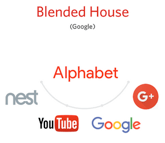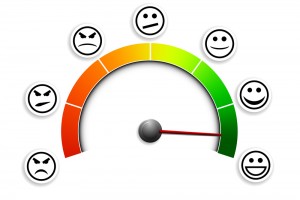The deciding factors, battle to choose, between the two most popular crowdfunding platforms–Kickstarter vs Indiegogo–is not so much a battle but a choice of options depending on your project and your audience:
Before getting ahead of ourselves, let’s step back and look at some of the most recent instances of crowdfunding success…
What do the Tesla Science Center at Wardenclyffe, the Coolest Cooler, the Pebble Smartwatch and Solar Roadways all have in common?
They’re only available today because a bunch of people pitched in to fund their development and production.
Crowdfunding can be described as the collection of many smaller contributions, using an online funding platform, to finance a project.
The old way of raising capital via banks and venture capitalists has been disrupted by the practice of crowdfunding.
Whether it’s a new product or raising funds for a charitable cause, a successful pitch on a crowdfunding website will attract backers. In exchange for their support–what could be thought of as an investment–the backers get cool rewards and limited edition bonuses.
Crowdfunding platforms have been used to back everything from artisanal food production to smart technology (see video below for example) to classic movie reboots.
Finding these backers used to be a problem until the first crowdfunding platform, ArtistShare, was launched in 2003.
Since then, the industry has grown in leaps and bounds and is now worth an estimated $ 34 billion.
There are currently 35 platforms worth mentioning, but two of them are considered the industry’s heavyweights:
Indiegogo was launched in 2008 and Kickstarter in 2009, and while they basically provide a platform for funding, there are some details that can determine their impact on a project.
Kickstarter vs Indiegogo: What makes each platform unique?
1. Kickstarter
Categories Covered: 15 including art, dance, technology, theater etc.
Monthly Visitors: 18 million (Jan. 2015 estimate)
Funding Model: All Or Nothing (Fixed funding)
Fees Payable: 5% of the amount raised.
Project Timeline: 30-60 Days

Since its launch, Kickstarter has quickly become the platform to beat in the crowdfunding space.
Even with their project restrictions and the fixed funding model, where the entire fundraising goal must be met for a successful project. If it isn’t met, the campaign starter doesn’t receive any funds and any money raised is returned to backers.
Despite this ‘constraint’, Kickstarter’s popularity guarantees that your projects will get noticed, even when a project doesn’t meet it’s funding goal.
Kickstarter has successfully funded 92,263 projects, raising a whopping $ 1,938,932,035 for project creators. Looks like they must be doing something right.
2. Indiegogo
Categories Covered: 24, including Animals, Community, Environment, Health, Politics, Religion, Small Business and Sports.
Monthly Visitors: 9.2 million
Fees Payable: 4% or 9% of the amount raised
Funding Model: All or Nothing & Keep It All (flexible funding)
Project Length: varies up to 40 Days
Indiegogo eschews Kickstarter’s restriction on the types of projects they allow, which means a broader spectrum of projects can get funded.
For example:
Kickstarter does not allow product in the Adult, so you will only find these edgier products on Indiegogo.
Additionally, the platform is considered more open and flexible because they offer two types of funding:
- flexible
- fixed
The table below, from Indiegogo, shows the fees involved based on the funding option you choose.
There used to be higher fees to participate on the platform at the flexible funding level, but in late 2015 Indiegogo updated their cost structure making flexible funding more appealing.

Accurately calculating Indiegogo’s success rate isn’t as straightforward:
Separating success rates due to fixed versus flexible funding isn’t easy and the platform isn’t as forthcoming as Kickstarter with their figures.
While Kickstarter only allows people based in the UK and the USA (they must have a physical address with a local bank account) to launch campaigns:
Indiegogo operates internationally and therefore has a much more diverse range of projects.
What does this mean for you?
Using crowdfunding can be a tempting option, especially for inventors and creators who believe in the marketability of their products.
While both platforms are great avenues to get your idea into the world, making the final choice should only be concluded once you have evaluated each platform based on your products audience and your personal circumstance.
Find answers to questions like:
Have products in my product category done better on one platform than on the other?
Would the publicity generated be worth it if the project doesn’t get funded?
Is this the right platform for my product in the first place (Creative projects tend to get funded more on Kickstarter)
Will you have enough funds to actually produce a product AFTER paying fees and the payment processor?
In the end, the choice boils down to you:
- Can you deliver on the product and perks promised?
- In the time frame specified?
- Is your business even based on the right continent?
Answer all these and more, but don’t forget the crucial aspect of delivery, i.e. fulfillment.
Ensure you have the right logistics partner in place to deliver the product and perks promised.
Business & Finance Articles on Business 2 Community(136)
Report Post





